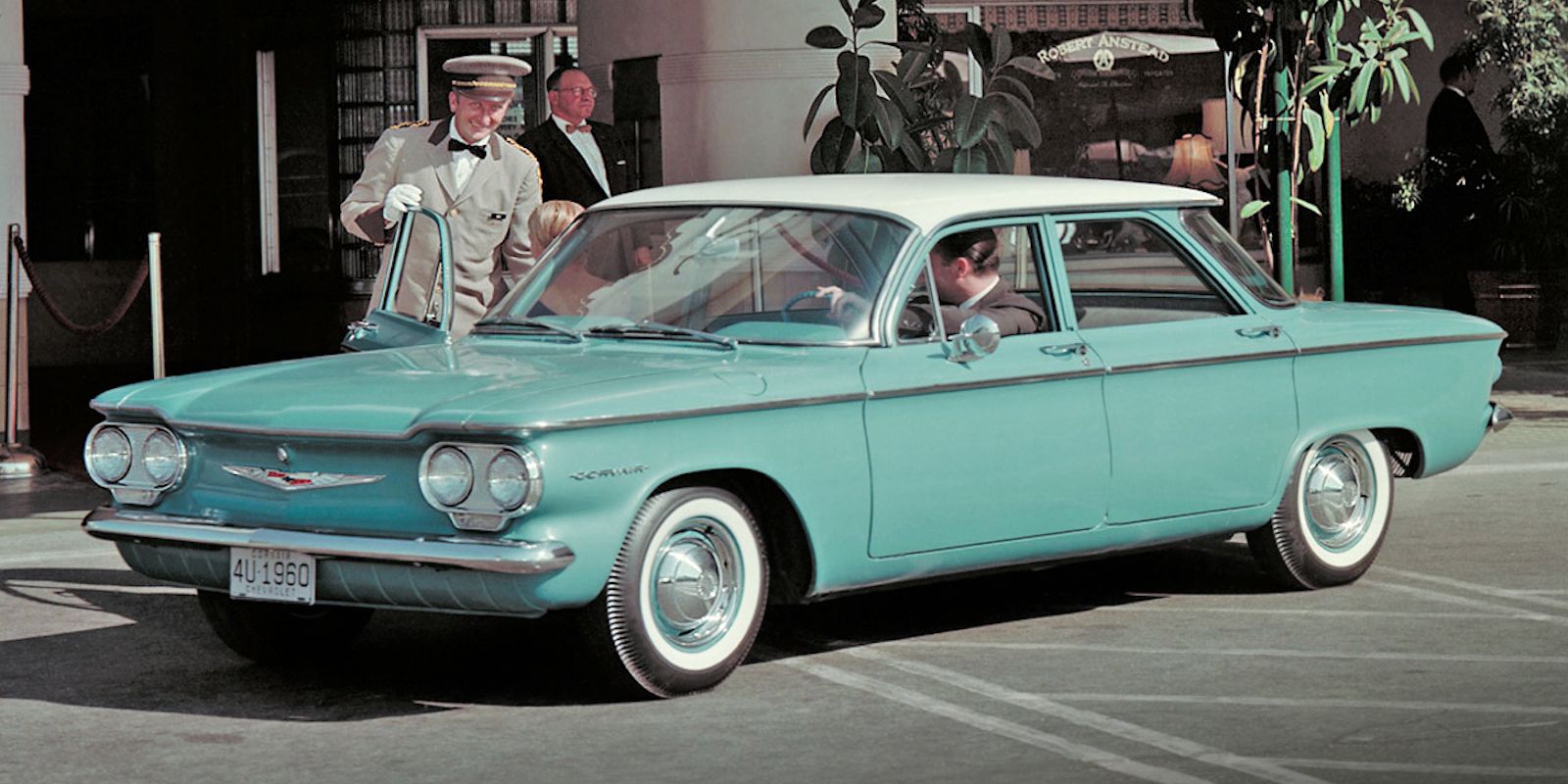Ford, or the Ford Motor Company to give it its full name, is one of the best known automotive manufacturers on the planet. Founded by none other than Henry Ford in 1903, the brand has produced some seriously iconic vehicles over the years. With such a long and eventful history, it is worth taking the time to look back at some of the classic cars that helped shape its growth.
HOTCARS VIDEO OF THE DAY

Let’s be honest and not look through the rose-tinted glasses, not every classic Ford has been a gem. There have been some real lemons, with models like the infamous Ford Pinto tainting the nostalgic view. However, if we look past these fairly rare misdemeanors, we really do need to give credit where it is owed. The Falcon has to be one of the best yet underappreciated models in Ford’s classic portfolio. First launched back in 1960, the model paved the way for several of the brand’s most iconic models. Without the fairly humble Falcon, Ford may not have enjoyed the success it has.
Looking at data from Hagerty.com and Classic.com, we have compiled this list detailing things everyone has forgotten about the Ford Falcon.
10.Three Generations Were Produced

The Ford Falcon was first released for the 1960 model year. First generation cars were produced until 1963. In 1964, Ford released a second generation model, which was sold for just two years until 1965. A third and final generation Falcon was released in 1966, with production ceasing in 1970 for North American customers.
One of the Falcon’s most notable features was its chassis. Constructed using a unibody structure, it was truly radical at the time. Other Ford models such as the Mustang, Granada, and Torino subsequently adopted this design.
Ford Falcon Generations
Generation
Release Year
First
1960
Second
1964
Third
1966
9.Power Was Supplied By An Inline-Six Or A V8

Despite a focus towards fuel efficiency, the Ford Falcon was still kitted out with a selection of sizable engines. The first generation models were supplied with a 95-hp 144 cubic-inch inline-six. Despite the relatively modest power output, the Falcon’s compact dimensions ensured it still felt like there was plenty of grunt available.
In later models, V8 power made its debut. Buyers were able to choose between a 260 cubic-inch V8, a 289 cubic-inch Windsor V8, and even a 302 cubic-inch V8. With such a great line-up, you simply couldn’t go wrong. Aftermarket modifiers have managed to extract even more power, and the Falcon is a popular restomod.
Engine Specs
Manufacturer
Ford
Ford
Ford
Ford
Production Years
1960-64
1963
1963
1968
Configuration
Inline-six
V8
V8
V8
Displacement
2.4 liters
4.3 liters
4.7 liters
4.9 liters
Power
95-hp
164-hp
195-hp
220-hp
Torque
134 lb-ft
258 lb-ft
285 lb-ft
300 lb-ft
Fuel
Gasoline
Gasoline
Gasoline
Gasoline
Notable Applications: 1960-1964 Ford Falcon, 1960-1964 Ford Ranchero, 1960-1964 Mercury Comet, 1960-1964 Ford E-Series, 1965 Ford Mustang, 1980 Ford Lincoln
8.The Mustang Was Inspired By The Falcon

Unlike the Falcon, the Ford Mustang is a vehicle that certainly needs no introduction. What many people may not be aware of, however, is that the Falcon actually helped prepare the market for compact and desirable cars. Known as “pony cars”, these sporty looking cars provided solid performance and came in at prices affordable to many.
The Mustang is undeniably the ultimate pony car, and remains an icon to this day. First produced for the 1965 model year, the Ford Mustang started from just $2,368. Available as either a coupe or a convertible, it was an instant hit. Under the hood, base models were fitted with a 170 cubic-inch 2.8-liter six-cylinder. Check out this Mustang Cobra sedan built using Australian Falcon parts.
Engine Specs
Manufacturer
Ford
Production Years
1965
Configuration
Inline-six
Displacement
2.8 liter
Power
105-hp
Torque
140 lb-ft
Fuel
Gasoline
Notable Applications
Ford Bronco Ford Econoline Van
7.The Ford Australia Falcon XB GT Was Mighty
 Ford
Ford
Relatively unknown to North Americans, Ford Australia was producing a whopper of a muscle car in the 1970s. Known as the Ford Falcon XB GT, the model was a real looker and sported an iconic ’70s fastback body form. The XB GT was based on Australia’s third-generation Falcon, and for those who desired it, a sedan was also available.
Power was supplied by a 351 ci “Cleveland” V8, providing a generous 300-hp and 380 lb-ft of torque. As standard, buyers received a four-speed manual gearbox, but a three-speed automatic was also available.
Engine Specs
Manufacturer
Ford
Production Years
1973-1976
Configuration
V8
Displacement
5.8 liter
Power
300 hp
Torque
380 lb-ft
Fuel
Gasoline
Notable Applications
Ford Mustang Mercury Cougar Mercury Montego Ford Torino
6.Its Compact Size Was Notable

The Ford Falcon is widely regarded as the United States’ first compact car. Prior to being used on the 1960s Falcon, the name had actually been awarded before. Henry Ford’s son Edsel Ford created a car he named the Falcon all the way back in 1935. The Falcon ended up as a luxury focussed vehicle, forming part of Ford’s short-lived “Mercury” line-up.
Prior to and during the 1950s, America was in love with large, powerful and desirable cars. Image was everything, and cars not only looked physically imposing, but had ample power to boot. Unfortunately, this relationship became somewhat tested as gas prices were sent sky-high and other economic factors caused consumers to have a rethink. Suddenly, there was a desire for more compact vehicles with lower fuel consumption.
5.After US Discontinuation, The Falcon Continued To Develop In Other Regions

What many in North America may not be aware, is that the 1970 cessation of production didn’t apply in all markets. The same platform continued to be produced by Ford Argentina all the way up to 1991. During this production run, the company made a series of fairly substantial facelifts to the Falcon, but retained the original underpinnings.
Australia was another region where Falcon production continued. Development of the Falcon continued all the way up to 2016, with continent exclusive versions. In total, seven generations were produced. It is fair to say the more modern iterations lost the charm and desirability of the original Falcon.
4.Rowan Atkinson Owned And Raced A 1964 FIA Racing Falcon

It is no secret that British comic actor Rowan Atkinson loves his cars. Over the years, Rowan has amassed a serious collection and even raced competitively. One of the more notable cars in his collection was a stunning 1964 Ford Falcon FIA race car. Finished in a beautiful turquoise paint, Atkinson had raced this Falcon on a number of occasions.
In 2021, he put the car up for sale with Silverstone Auctions. The unique vehicle sold for £56,250, the equivalent of $77,625 at the time of sale. The model featured a mighty 4.7-liter V8, and was crashed by Atkinson in the Shelby Cup at the 2014 Goodwood Revival event in England.
3.Successful Marketing Featured Well-Known Comic Characters

There is no point producing a great product if nobody knows about it. To help get the word out about the Falcon, Ford turned to the world of comic strips. The “Peanuts” remain to this day one of the most popular American comic characters ever devised. Illustrated by Charles M. Schulz, the Peanut gang became known the world over.
Ford produced adverts featuring the most popular characters, notably Charlie Brown and Sally. The decision to use these iconic characters in the marketing of the Falcon undoubtedly played a big role in the model’s success.
2.The Falcon Helped Save Ford

The Ford Falcon isn’t one of Ford’s most memorable models, in fact, many people may not even be familiar with it. Its younger brother, the Mustang, has enjoyed far more of the limelight, while the Falcon is often forgotten. During a difficult financial period for Ford, the brand sought the help of Robert McNamara.
Working as a consultant initially, McNamara progressed to Ford President in 1960. Later on in his career, he went on to work for US President John F. Kennedy as secretary of defense. The role he played in Ford was pivotal in saving the brand, with successful projects such as the Falcon introduced under his watch.
1.It Outsold The Competition

At the time of its launch in 1960, other manufacturers were also beginning to wake up to the fact consumers wanted the option of cheaper and less complicated cars. One of the Falcon’s biggest competitors had to be the Corvair produced by fellow American brand Chevrolet.
The Corvair was produced in many body styles, from the more familiar coupe, convertible and sedan, to vans and pickup trucks. It was a truly versatile vehicle. In 1960, Chevrolet shifted an impressive 250,000 examples of the Corvair. Despite being a sizable quantity, Ford’s Falcon dwarfed it, with a massive 435,000 cars selling over the same period.Here are 10 things only real gearheads know about the Chevrolet Corvair.


